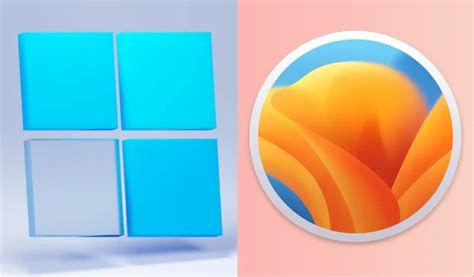Introduction

The age-old debate between Windows and Mac computers has reached unprecedented heights in the educational sphere. As students seek the perfect technological companion for their academic pursuits, the choice between these two operating systems becomes more crucial than ever. In this comprehensive analysis, we delve into the strengths and weaknesses of Windows and Mac in the school environment, providing you with the insights necessary to make an informed decision.
Windows: The Powerhouse with Vast Compatibility
Pros:
- Extensive Software Compatibility: Windows boasts an unparalleled range of software options, with the dominant share in the market. This guarantees compatibility with virtually any educational software, from basic word processors to complex scientific applications.
- Ease of Use and Customization: Windows is renowned for its user-friendliness, making it ideal for novice users. Its customizable interface allows students to tailor their desktop to their specific preferences and workflows.
- Gaming Performance: Windows remains the preferred choice for gamers, with its superior hardware support and optimized graphics capabilities. This can be beneficial for students who enjoy recreational gaming or use games for educational purposes.
Cons:
- Security Concerns: Windows has a reputation for being more vulnerable to malware and viruses due to its widespread usage. Students must exercise caution and install reliable antivirus software to protect their devices.
- Occasional System Crashes: While generally reliable, Windows can occasionally experience system crashes or freezing, which can disrupt workflow and cause data loss.
- Hardware Limitations: Windows-powered laptops and tablets tend to be bulkier and heavier than their Mac counterparts, which can limit portability.
Mac: The Allure of Premium Design and Ecosystem
Pros:
- Sleek Design and Premium Build: Macs are known for their exquisite craftsmanship, featuring premium materials and attention to detail. They exude a sense of elegance and professionalism that may resonate with students seeking a stylish device.
- Seamless Ecosystem: Mac users benefit from a tightly integrated ecosystem that seamlessly connects their devices, making file sharing, messaging, and other tasks effortless.
- Stability and Security: Mac’s closed operating system makes it inherently more secure than Windows, reducing the risk of malware infections and system crashes.
Cons:
- Limited Software Compatibility: While Mac offers a substantial software library, it trails behind Windows in terms of the sheer number of available applications, particularly in specialized domains. This may restrict students’ options for niche or industry-specific software.
- Cost Premium: Macs tend to carry a higher price tag than Windows-based devices, which can be a significant consideration for budget-conscious students.
- Limited Hardware Upgrades: Unlike Windows-based laptops, Macs often have limited upgrade options, which can be a disadvantage for students who need to expand their hardware capabilities.
Table 1: Key Differences between Windows and Mac in School
| Feature | Windows | Mac |
|---|---|---|
| Software Compatibility | Extensive | Substantial but Limited |
| Ease of Use | User-Friendly | Intuitive but Limited Customization |
| Security | Vulnerable to Malware | More Secure |
| Gaming Performance | Superior | Limited |
| Design and Build Quality | Variable | Sleek and Premium |
| Cost | Varies | Higher |
| Ecosystem | Open | Closed |
Motivations and Pain Points
Choosing Windows:
- Motivation: Students prioritizing software compatibility, customization, and gaming performance.
- Pain Points: Security concerns, occasional system crashes, hardware bulkiness.
Choosing Mac:
- Motivation: Students seeking premium design, seamless ecosystem, and stability.
- Pain Points: Limited software options, cost premium, limited hardware upgrades.
Why it Matters
The choice between Windows and Mac in school has far-reaching implications for students’ academic success, productivity, and overall experience.
- Academic Performance: Software compatibility ensures that students have access to the necessary tools for their studies.
- Productivity: Ease of use and system stability contribute to uninterrupted workflow and minimize distractions.
- Personalization: Customization options allow students to create a personalized learning environment that suits their needs.
- Technology Confidence: The choice of a familiar and user-friendly operating system can boost students’ confidence in using technology for learning.
Table 2: Software Compatibility for Educational Applications
| Application Type | Windows | Mac |
|---|---|---|
| Word Processing | Microsoft Word, Google Docs | Pages, Microsoft Word |
| Presentations | Microsoft PowerPoint, Google Slides | Keynote, Microsoft PowerPoint |
| Spreadsheets | Microsoft Excel, Google Sheets | Numbers, Microsoft Excel |
| Scientific Software | MATLAB, Mathematica | MATLAB, Mathematica (Limited) |
| Design Software | Adobe Creative Suite, Autodesk AutoCAD | Adobe Creative Suite (Limited), SketchUp |
Table 3: System Stability and Security Features
| Feature | Windows | Mac |
|---|---|---|
| System Crashes | Occasional | Rare |
| Malware Vulnerability | High | Low |
| Antivirus Protection | Required | Recommended |
| Privacy and Data Security | Variable | Strong |
Table 4: Design and Build Quality for Education
| Feature | Windows | Mac |
|---|---|---|
| Portability | Bulkier | Sleeker |
| Durability | Variable | Premium |
| Aesthetics | Functional | Stylish |
| Upgradeability | Flexible | Limited |
FAQs
- Q1: Which operating system is better for note-taking?
-
A: Both Windows and Mac offer excellent note-taking apps, with OneNote and GoodNotes being popular choices. Ultimately, the best choice depends on personal preferences.
-
Q2: Can I use Windows software on a Mac?
-
A: Yes, it is possible to run Windows software on a Mac using virtualization software or emulation tools. However, compatibility and performance may vary.
-
Q3: Which is more suitable for students with special needs?
-
A: Mac offers assistive technologies and accessibility features that may benefit students with special needs, but Windows also provides robust accessibility options. The best choice depends on the specific requirements.
-
Q4: How can I save money on a laptop for school?
-
A: Consider purchasing a refurbished device or taking advantage of student discounts offered by manufacturers and retailers.
-
Q5: What is the best way to protect my device from theft?
-
A: Use a physical lock or security cable, enable device tracking features, and back up your data regularly.
-
Q6: Can I connect my Windows/Mac device to a projector?
-
A: Yes, both Windows and Mac devices support projector connectivity using HDMI or other interfaces.
-
Q7: Which operating system is better for collaboration?
-
A: Mac benefits from a closed ecosystem that facilitates seamless collaboration within Apple products and services. Windows offers a wider range of collaboration tools, including Microsoft Teams and Zoom.
-
Q8: Can I use a gaming mouse or keyboard with my school laptop?
- A: Yes, most gaming peripherals are compatible with both Windows and Mac devices. However, check compatibility specifications before purchasing.
Conclusion
The choice between Windows and Mac in school is a complex one, influenced by a multitude of factors. While Windows excels in software compatibility, customization, and gaming performance, Mac offers a more refined experience with a premium design, a tightly integrated ecosystem, and enhanced security. Ultimately, the best decision depends on the individual student’s needs, preferences, and budget. By carefully considering the strengths and weaknesses outlined in this article, students can make an informed choice that will empower their academic pursuits.
